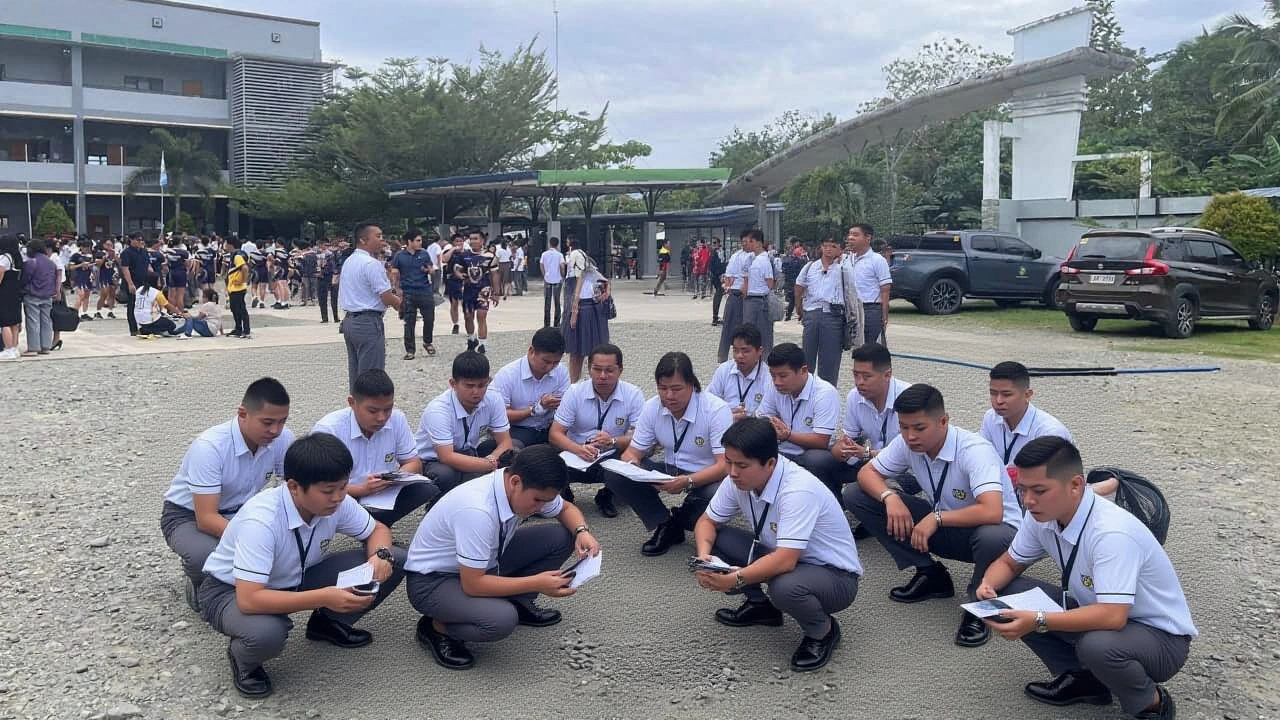When a magnitude 7.4 earthquakeManay, Mindanao, Philippines struck early Friday, it set off a chain‑reaction of panic, rescue missions and a brief tsunami alarm.
The United States Geological Survey (USGS) recorded the tremor at 7.4 on the Richter scale, locating the epicenter roughly 12 miles off the coast of Manay town.
Less than ten hours later, at about 7:50 p.m., a 6.7‑magnitude aftershock rattled the same area, intensifying fears that more devastation was on the way.
Why Mindanao Felt the Shock Differently
Mindanao sits on the edge of the Philippine Sea Plate where it meets the Eurasian Plate, but historically the region has seen fewer high‑magnitude quakes than Luzon or the Visayas. That makes the Friday events stand out, especially after the magnitude 6.9 Cebu earthquakeCebu province that killed 75 people just 11 days earlier.
Scientists say the clustering of large quakes suggests a shift in stress along the subduction zone, a pattern the Philippine Institute of Volcanology and Seismology (PHIVOLCS) is monitoring around the clock.
Casualties and Immediate Damage
Official tallies from CBS News put the death count at six, though early YouTube clips mentioned only two – a reminder that numbers evolve as rescue teams reach remote spots.
- Three miners died when a gold‑mining shaft collapsed in the mountainous municipality of Pantukan.
- One miner was rescued alive from the hamlet of Gumayan, while several others suffered injuries.
- In Mati City, a wall collapse killed one person and a heart attack claimed another.
- Police in Davao City confirmed a fatality after falling debris crushed a passerby.
Kent Simeon, a rescue official from Pantukan, told AFP that “some tunnels collapsed, but the miners managed to get out.” He added that the survivor was pulled to safety by local volunteers who braved after‑shocks and muddy roads.
Response from Authorities
Within minutes of the main shock, the Philippine government issued tsunami warnings for low‑lying coastal areas. Evacuation centers filled quickly as residents fled to higher ground.
The alerts were lifted after roughly three hours when the Pacific Tsunami Warning Center reported no significant wave activity. Power outages lingered in parts of Davao Oriental, and communications were spotty in Pantukan and surrounding villages.
Local government units dispatched medical teams, engineers, and search dogs. In Davao City, police coordinated with the National Disaster Risk Reduction and Management Council to clear debris and stabilize damaged structures.
Broader Impact and What It Means for the Philippines
Beyond the tragic loss of life, the quakes exposed the vulnerability of informal miners who dig without safety protocols. The collapse in Pantukan underscores a long‑standing issue: thousands of Filipinos work in hazardous, unregulated mines, often deep in remote jungles.
Economically, the region’s daily commerce stalled as markets closed and transportation routes were blocked. Tourists heading to the coastal resorts of Davao Oriental postponed trips, denting a sector already recovering from the Cebu disaster.
For disaster management agencies, the back‑to‑back events are a stress test. PHIVOLCS announced a five‑day “aftershock watch” and urged residents to keep emergency kits handy, a message echoed by the Red Cross and local NGOs.
What Comes Next?
Seismologists expect more aftershocks, some potentially feeling like moderate tremors. The USGS has projected a 65 % chance of another quake above magnitude 5.5 in the next week.
Meanwhile, reconstruction crews are assessing structural damage in Mati and Davao City, prioritizing schools and hospitals. The government is also reviewing mining regulations, with a spokesperson hinting at tighter enforcement in the next legislative session.
Historical Lens: The Philippines on the Ring of Fire
Situated on the Pacific Ring of Fire, the Philippines experiences an average of 20 magnitude‑6.0+ quakes each year. The 1990 Luzon earthquake, which killed over 1,600 people, remains a grim benchmark for emergency preparedness.
Compared to that tragedy, the response to the Mindanao event shows progress: faster alerts, more coordinated evacuations, and real‑time data sharing between USGS, PHIVOLCS, and local agencies.
Still, the recurring theme is clear – without sustained investment in building codes, mining safety, and community education, each quake will repeat a familiar story of loss.
Frequently Asked Questions
How does this earthquake affect miners in Mindanao?
The collapse in Pantukan highlights the danger of informal gold mining, where shafts often lack support and safety checks. After the tragedy, local authorities said they will conduct safety inspections and push for formal licensing to reduce future losses.
What caused the tsunami warning and why was it lifted?
The initial quake displaced enough seawater to trigger a Pacific Tsunami Warning Center alert. Subsequent measurements showed wave heights below the danger threshold, so Philippine officials cancelled the warning after about three hours.
Are more aftershocks expected?
Yes. USGS forecasts a roughly 65 % chance of another magnitude‑5.5+ tremor within the next seven days, and PHIVOLCS has issued a five‑day aftershock watch advising residents to stay alert.
What lessons were learned compared to the recent Cebu quake?
The quicker rollout of evacuation centers and more accurate tsunami modeling show progress. However, both events exposed gaps in data sharing for remote mining communities, prompting calls for better communication infrastructure.
How are local businesses coping with the disruptions?
Many stalls in Mati and Davao City closed temporarily, and transport routes were blocked, leading to short‑term revenue loss. Some merchants received emergency cash assistance from the National Disaster Risk Reduction Council to keep operations afloat.
